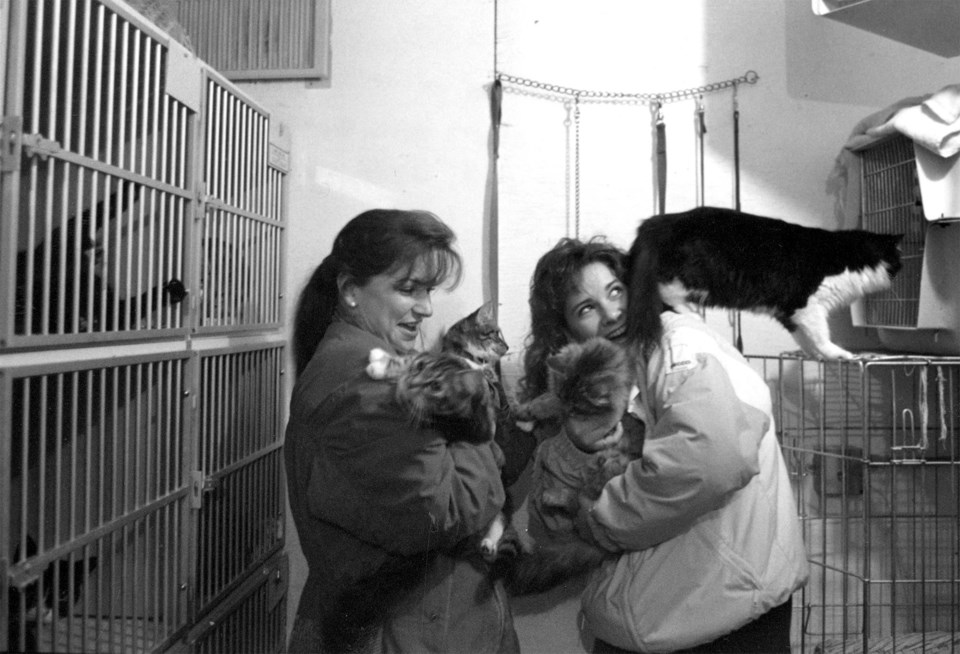WAG celebrates its 40th birthday this year, and the professional operation has seen dramatic changes since its humble beginnings in 1982. Known and loved throughout the community, Whistler Animals Galore Society, better known as WAG, was started in 1982 by Dorothy Sabey and Debbie Chow.
In 1986, the Whistler Question described WAG as “the barebones troubleshooting agency by which Sabey and her colleague, Debbie Chow, handle lost or stray pets.” Initially, WAG relied almost entirely on the hard work and generosity of these two women. They did receive a grant-in-aid each year from the municipality, however, it was only $250—and intended to cover expenses such as gas, telephones, and spaying animals. While awaiting adoption, dogs and cats were cared for in Dorothy and Debbie’s homes, and sometimes the pound held animals a week beyond the usual limits if their homes were already full.
WAG continued to rely solely on volunteers until 1996, when a paid program coordinator was hired. Before this, the future of WAG had looked uncertain, as there were only four volunteers remaining and they were quickly burning out. The new system did not fully get off the ground, however, before the coordinator quit two years later. David MacPhail spoke to Pique about how WAG had been on the brink of closure again in 1998. “The coordinator had quit and I was the only one left on the board. I was basically left to turn off the lights and go home,” MacPhail said.
At that time, WAG had no shelter, no volunteer program, little publicity, and relied solely on foster homes for the animals in its care. The municipal budget used for medical assistance was also beginning to dry up. Trying to turn things around, Kristen Kadis was brought in as a new coordinator, and that year the first annual Dog Parade started as part of the Whistler Ski and Snowboard Festival.
Things sure did turn around. In August 2000, WAG was given the bulk of local shelter work from the Resort Municipality of Whistler (RMOW) in exchange for the use of space in the building. Prior to this, the pound was largely separate from WAG and operated by RMOW animal control officers, predominantly Kimberly Lord. Jody Stockfish, who was brought on as another WAG coordinator in 1999, said at the time, “Having a central facility, rather than the traditional fostering system, will make a huge difference to what WAG can achieve. It also gives WAG’s core of 15-to-20 regular volunteers easy access for cleaning and walking duties.” The work of WAG was also recognized by the municipality, which increased the organization’s grant-in-aid to $10,000. In 2001, after years of legal to-and-fro, WAG was awarded charitable status, making fundraising much easier.
While having control of the shelter was a huge improvement, it was still cold, cramped, near impossible to separate all the animals, and a flood risk. Paul Fournier remembers when the shelter was threatened by rising water, while he was chair of WAG’s board of directors in the 1990s. “We had over 30 cats, and we had to find cages for these cats and move them up to a farm in Pemberton. I don’t know if you have ever heard an angry cat, but when you take 30 cats and you put them in cages and then you stuff them in the back of my cargo van, you’ve never heard a sound like that.”
The new shelter officially opened in the RMOW’s Public Works Yard in 2005, and today we have a shelter to be envious of. While much has changed over the past 40 years, WAG’s focus on animal welfare remains the same.


.jpg;w=120;h=80;mode=crop)

